
Explore the significance of the Ecce Agnus Dei chasuble, beautifully crafted in Luther Rose brocade. This unique blue garment features the powerful motif of the Lamb of God, symbolizing the essence of Advent. Adorned with intricate O Antiphon symbols, it encapsulates the anticipation of Christ’s coming and the fulfillment of prophecy. Perfect for the Advent season, this chasuble merges tradition and artistry, inviting deeper reflection on our faith.
Like this:
Like Loading...

Explores the life and legacy of Saint Charles Borromeo, highlighting his commitment to preserving sacred traditions within the Catholic Church during a transformative period. His influence continues to inspire those who value the importance of tradition in faith.
Like this:
Like Loading...

Struggling to find the perfect holiday gift for the special women in your life? Our faith-based jewelry collection offers meaningful, personal gifts that reflect love and care. Enjoy 33% off, plus an additional 10% with code GIFT10. With over 10,000 happy customers and glowing reviews, you can trust us to help make this Christmas unforgettable!
Like this:
Like Loading...

The Luther Rose is a powerful symbol of faith, designed by Martin Luther in the 1500s. It represents core Christian teachings—faith in Christ, peace, joy, and eternal blessings. As we celebrate Reformation Month, limited edition Luther Rose mugs are being released, making it the perfect time to reflect on its significance and legacy.
Like this:
Like Loading...

The “MB” monogram, standing for Mater Beatissima or Blessed Mother, symbolizes Mary’s grace and faith, dating back to the Middle Ages.
Like this:
Like Loading...
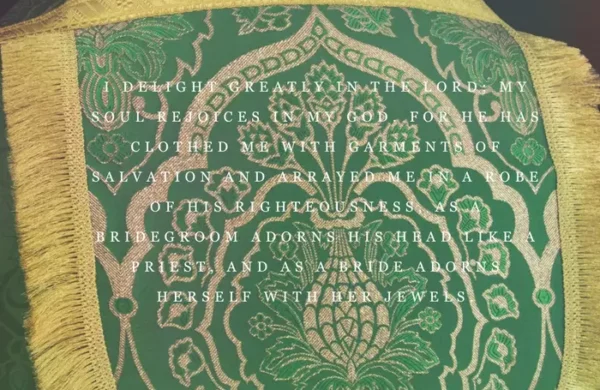
Cope, a liturgical vestment worn in Christian denominations such as the Roman Catholic, Anglican, and Lutheran churches. It traces the cope’s origins from Roman cloaks to its evolution into a ceremonial garment by the 9th to 13th centuries. Made from luxurious fabrics and adorned with religious symbols, the cope is typically worn during non-Eucharistic services like processions. Its color changes with the liturgical calendar, symbolizing clergy authority and the Church’s long-standing traditions.
Like this:
Like Loading...

This October, celebrate Pastor Appreciation Month and Reformation season with our limited-edition handcrafted mugs. Each one is hand-thrown by local Minneapolis artists, capturing cozy fall vibes in warm maroon, cream, caramel, and dark chocolate tones. Perfect for gifting to your pastor or enjoying during crisp autumn mornings, these mugs are uniquely crafted, available in extremely limited quantities. Once they’re gone, they’re gone—so grab yours while they last!
Like this:
Like Loading...
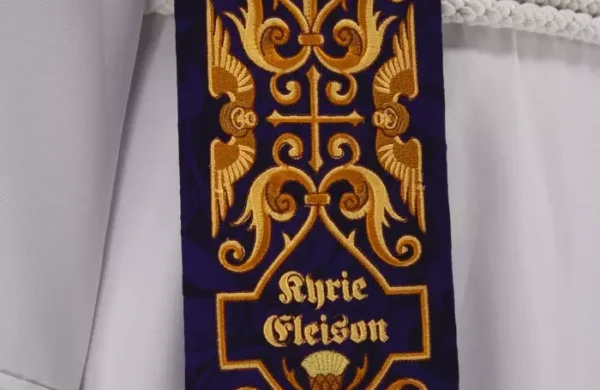
The phrase “Kyrie eleison” reminds us of the vital balance between mercy and justice, emphasizing our need for God’s grace in everyday life. This reflection calls for humility, compassion, and a deeper recognition of divine intervention.
Like this:
Like Loading...

The Western Schism (1378-1417) was a key event in Church history, marked by multiple claimants to the papacy, dividing European support and weakening Church authority. It ended with the Council of Constance, which restored unity under Pope Martin V.
Like this:
Like Loading...
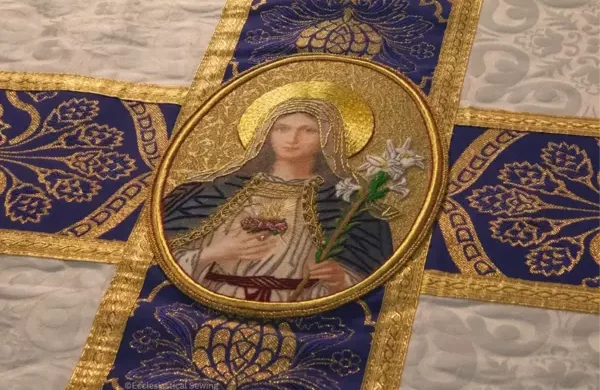
A casket pall, a ceremonial cloth used in funerals, symbolizes respect, equality before God, and resurrection. Originating in medieval Europe, it recalls baptism and new life in Christ. Traditionally white for purity and victory over death, palls were once black to signify mourning. The shift to white reflects a focus on resurrection and eternal life, emphasizing hope over mourning.
Like this:
Like Loading...
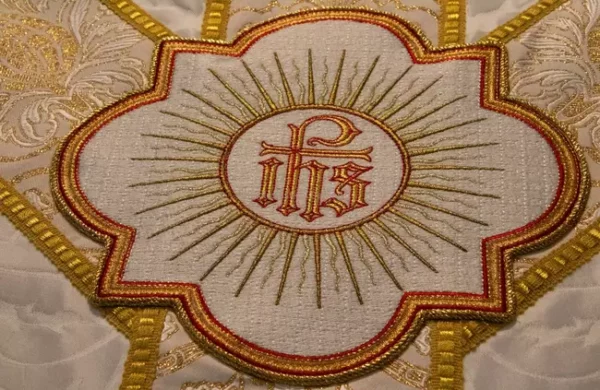
In Luke 18:1-8, Jesus tells a parable about a persistent widow seeking justice from an unjust judge. He uses this story to encourage his disciples to always pray and not lose heart, showing that persistent prayer leads to trust in God’s eventual response, even if it differs from our expectations.
Like this:
Like Loading...
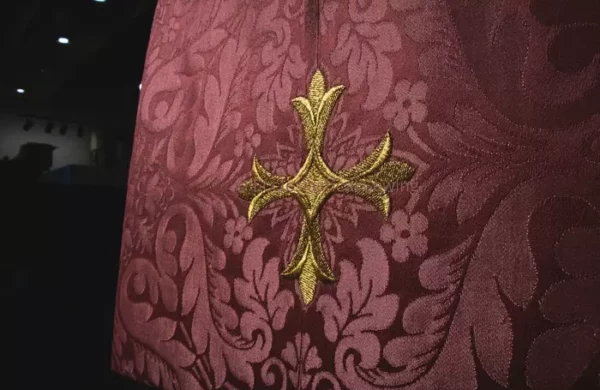
The Fleury Cross, with its fleur-de-lis ends, blends religious and royal symbolism, originating in medieval France. It gained prominence in heraldry, associated with French kings and chivalric orders, symbolizing Christianity and divine right to rule. Today, it holds significance in both religious and secular contexts, found in logos, institutions, and churches.
Like this:
Like Loading...
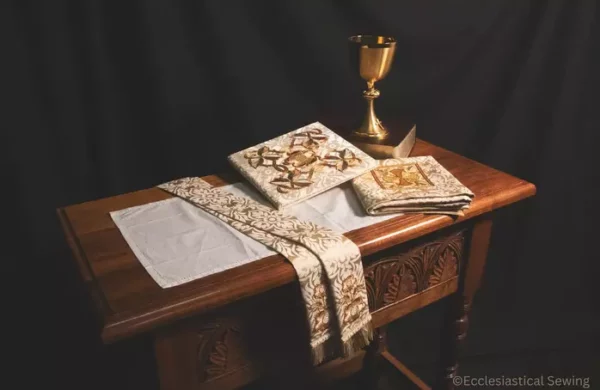
Ecclesiastes teaches us about life’s uncertainties and the need to act wisely. It advises enjoying life’s pleasures, making smart decisions, and trusting in God’s plan. The passage warns against chasing empty pleasures and encourages living with purpose and trust.
Like this:
Like Loading...
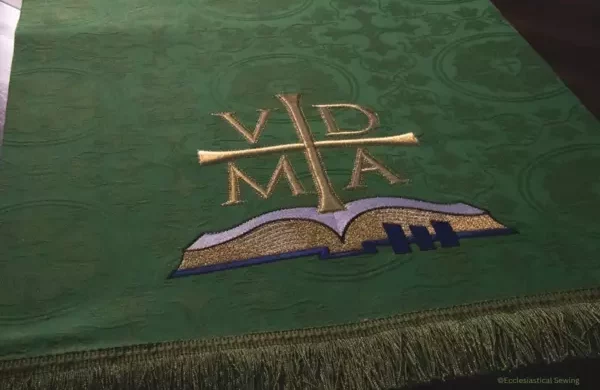
Ecclesiastes 3 reminds us that life has its own rhythm, encompassing various seasons of joy, sorrow, growth, and challenges. It teaches us to accept the natural flow of life and find balance in its contrasting threads. Through it all, God’s presence remains constant, guiding us and making everything beautiful in its time. Each season has its purpose, encouraging us to cherish every moment and find joy and meaning in our journey.
Like this:
Like Loading...
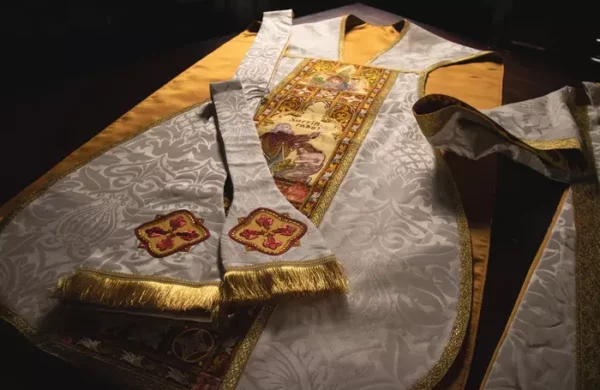
Our company aims to transform church worship by reviving high-quality, traditional vestments. Rejecting low-grade, mass-produced alternatives, we honor centuries of craftsmanship with detailed, meaningful designs. While we can’t serve every church, we strive for excellence and need your help to spread the word. Share our mission and support us in preserving the art of church vestments.
Like this:
Like Loading...
















You must be logged in to post a comment.